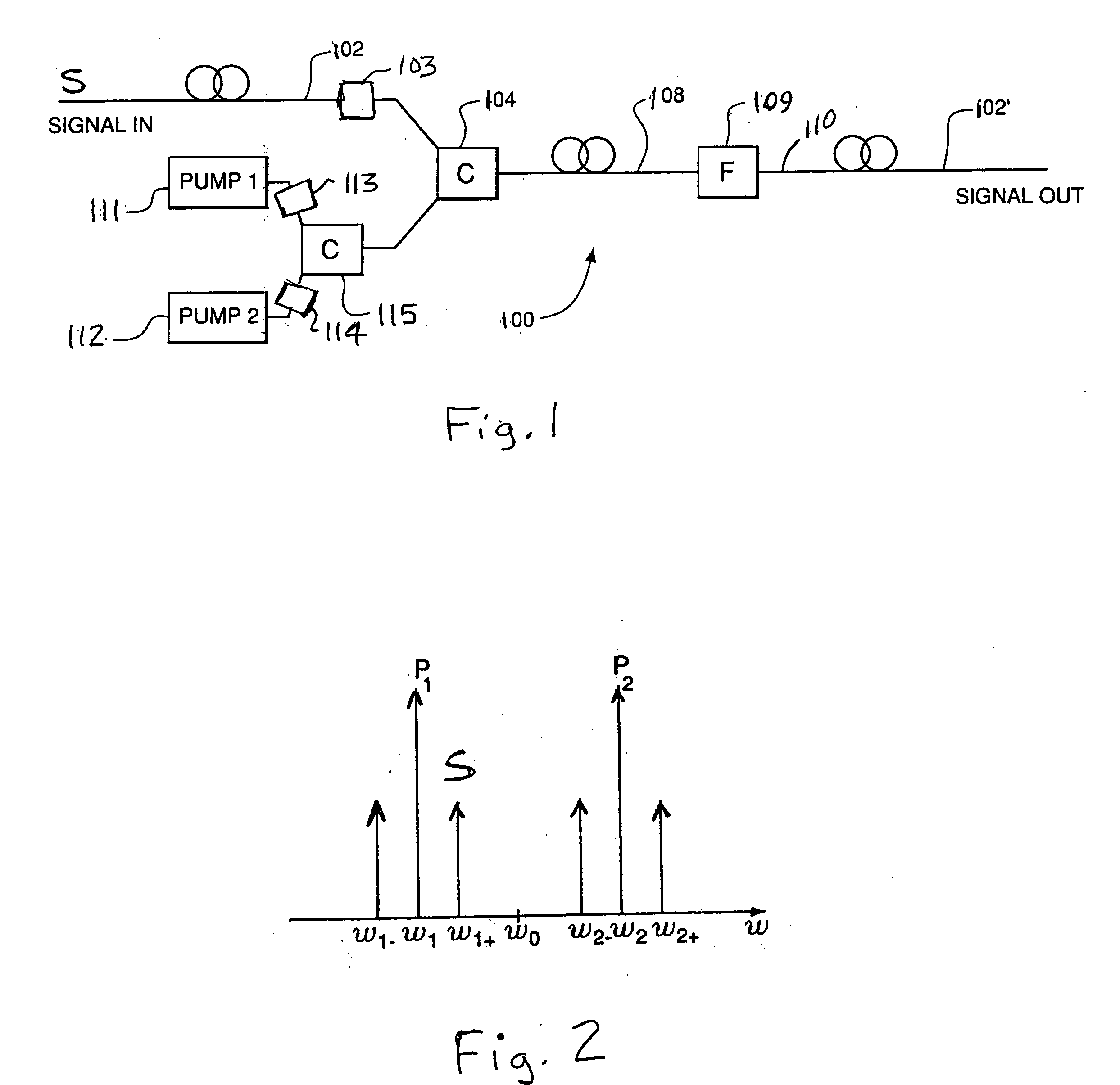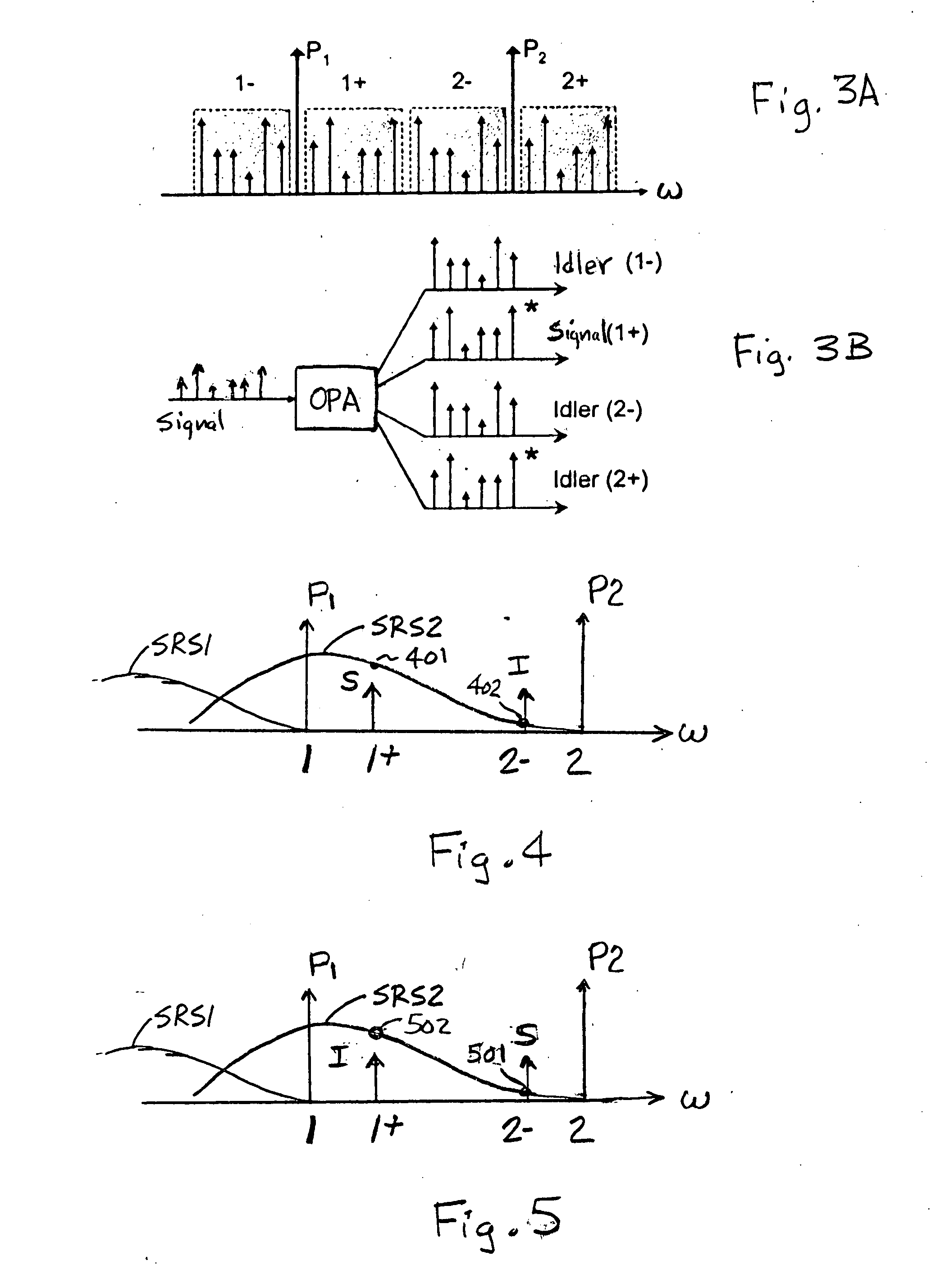Two-pump optical parametric devices having reduced stimulated raman scattering noise levels
- Summary
- Abstract
- Description
- Claims
- Application Information
AI Technical Summary
Benefits of technology
Problems solved by technology
Method used
Image
Examples
Embodiment Construction
[0044]FIG. 1 shows, in accordance with one embodiment of the present invention, a two-pump OPD 100 that is configured for use in a long-haul transmission line of an optical communication system. OPA 100 is coupled between two sections 102 and 102′ of long-haul optical fiber. The input optical signal S from section 102 is received or coupled via polarization coupler 103 to a coupler 104 of the OPA 100. The coupler 104 is configured to combine an input signal S from section 102 with two different pump waves generated by two pump-wave sources (e.g., lasers) 111 and 112. The output of pump sources 111 and 112 are received or coupled via polarization couplers 113 and 114, respectively, and are combined in coupler 115. The combined two-pump signal P1+P2 from coupler 115 is then further combined with input signal S in coupler 104. Depending on the implementation of OPD 100, each of the pump wave sources 111 and 112 may be a continuous-wave (CW) or pulsed optical field. The combined optical...
PUM
 Login to View More
Login to View More Abstract
Description
Claims
Application Information
 Login to View More
Login to View More - R&D
- Intellectual Property
- Life Sciences
- Materials
- Tech Scout
- Unparalleled Data Quality
- Higher Quality Content
- 60% Fewer Hallucinations
Browse by: Latest US Patents, China's latest patents, Technical Efficacy Thesaurus, Application Domain, Technology Topic, Popular Technical Reports.
© 2025 PatSnap. All rights reserved.Legal|Privacy policy|Modern Slavery Act Transparency Statement|Sitemap|About US| Contact US: help@patsnap.com



